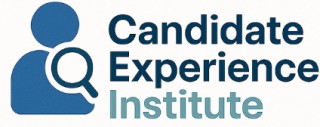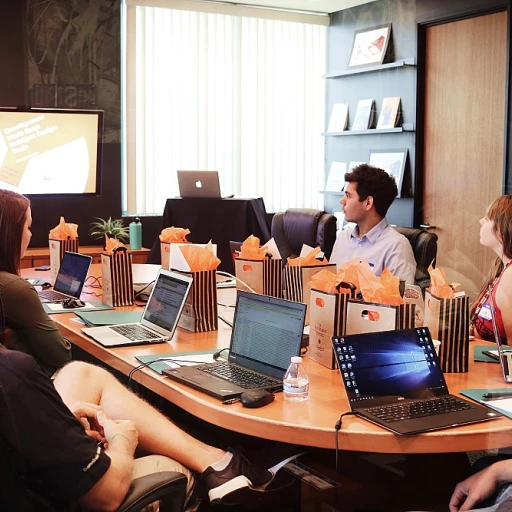Understanding the Candidate's Perspective
Seeing Through the Candidate's Eyes
In the realm of human resources, understanding the candidate's perspective is pivotal. It's not just about filling a position; it's about creating a journey that resonates with potential employees. A candidate's experience begins long before they submit an application. From the moment they encounter your company's brand, their perceptions start to form.
Organizations must think about how their brand is perceived in the marketplace. This involves not only the job descriptions but also the company's presence on social media and job boards. Candidates today are savvy; they research potential employers just as employers vet candidates. Ensuring your company projects a positive image can be a game-changer.
Furthermore, consider the role of recruitment marketing strategies in attracting top talent. It's about more than just listing job openings; it's about showcasing what makes your company unique and why someone would want to work there.
Aligning Expectations
Managing expectations is another crucial aspect. Candidates often have a clear idea of what they want from a potential employer. This includes not only the role itself but also aspects like company culture, employee benefits, and career growth opportunities. Human resource departments must align these expectations with what the company can realistically offer.
Providing clear and concise information during the recruitment process can help manage these expectations. This includes details about the role, the team, and the company culture. Transparency can help build trust and ensure that candidates feel valued and respected.
In the following sections, we will delve into streamlining application processes and leveraging technology to enhance these experiences further. By focusing on these areas, companies can not only attract but also retain top talent, ensuring a better return on investment in their recruitment efforts.
Streamlining the Application Process
Optimizing the Recruitment Journey
In the contemporary human resources landscape, it's crucial to streamline the application process to enhance the candidate experience effectively. Organizations must think strategically about each stage of the recruitment journey, ensuring that it is efficient and user-friendly for potential employees. The refinement of this process can significantly influence a candidate's perception of the company and ultimately affect their decision to join the team.
One of the primary steps is simplifying the application forms. A cluttered or demanding application can deter potential talent from applying, which can be detrimental to the business. By utilizing best-in-class management systems, cloud-based platforms, and learning management systems like ThinkHR Learn, companies can create an intuitive and straightforward application process that minimizes unnecessary barriers.
Moreover, compliance in document submissions is another area that should not be overlooked. Implementing management processes and risk management services, including compliant document submissions and employee training programs, will not only align with regulatory standards but also underscore the organization's commitment to efficiency and reliability.
Training courses and compliance training are vital in preparing HR teams and management to navigate potential challenges in the application and recruitment processes. These resources can ultimately help organizations stay ahead in the competitive job market, ensuring the seamless integration of new employees.
Through an optimized application process, businesses can ensure they are not only attracting top talent but also providing a positive experience for each candidate. This step is integral to developing a candidate-centric culture, where the organization's focus on human resources and performance management is evident. For more insights on effectively evaluating the current candidate experience, explore the importance of enhancement in this
informative article.
Effective Communication Strategies
Clear and Transparent Communication
Effective communication strategies are a linchpin in enhancing candidate experience. Transparency and consistency can not only strengthen a candidate's connection to the company but also improve overall engagement. Understanding this, organizations such as ThinkHR focus on providing comprehensive training and compliance solutions that equip hiring teams with the skills to communicate effectively.
The role of communication is multi-faceted, impacting aspects from informing candidates about the hiring process to delivering timely updates. It's vital that businesses ensure they craft clear messaging about their values, culture, and expectations during recruitment. For instance, leveraging technology can enable automated updates and reminders, ensuring that candidates remain informed and feel valued throughout the recruitment journey.
Utilizing platforms that offer consulting services can amplify this approach. Such platforms may offer tailored employee training and risk management services, which include performance and talent management techniques aimed at cultivating a candidate-centric experience. Emphasizing these best-in-class strategies ensures compliance with human resource standards and aids in aligning with the company's objectives in a cloud-based environment.
Moreover, comprehensive feedback mechanisms can play a significant role in enhancing communication. Providing constructive feedback helps candidates understand their performance and future opportunities within the organization, which is a critical component of a robust human resources strategy.
Another practical aspect organizations must consider is the use of learning management systems, which are becoming increasingly vital. These systems allow a seamless integration and delivery of training courses, coaching hiring managers on communication best practices. This not only aids in uplifting the quality of the hiring process but also contributes to better employee engagement and return on investment.
In conclusion, focusing on clear communication strategies and embracing technology is essential in creating a strong foundation for candidate experience. For more insights on enhancing candidate interaction at every step, explore
best practices unveiled.
By prioritizing transparent, efficient, and consistent communication, organizations can significantly elevate their recruitment processes, fostering a positive image that resonates beyond the application phase.
Leveraging Technology in Recruitment
Integrating Technological Solutions in Recruitment
When it comes to enhancing candidate experience, leveraging technology in recruitment is pivotal. As businesses evolve, integrating advanced technology can streamline processes, minimize human error, and create a more engaging experience for potential hires. For human resource teams, this means implementing systems that not only simplify recruitment but also enhance the overall experience for candidates.
Adopting a cloud-based recruitment platform can make the application process seamless. These systems offer automated features that can drastically cut down the time recruiters spend on manual tasks. This means organizations can focus more on talent management and developing deeper connections with candidates.
Incorporating a robust learning management system (LMS) into the recruitment process can also aid in defining a candidate-centric culture. An LMS can be used to provide initial employee training and compliance training, ensuring that prospective employees feel prepared and supported from the start. Having a training course dedicated to understanding workplace dynamics and compliance requirements can help set a positive tone for new hires.
ThinkHR and similar platforms offer risk management and compliance services to help businesses ensure all processes meet the necessary standards. Capitalizing on these services enables a company to demonstrate commitment towards transparency and employee benefits, thereby promoting a positive workplace culture as outlined in earlier sections.
Furthermore, by utilizing performance management and human resource consulting services, companies can focus on providing a top-notch candidate experience. These services include talent management solutions that align with the company’s goals and objectives, ensuring a higher return on investment.
Ultimately, to stay ahead in recruitment, businesses must think and act dynamically, continuously updating their technology stack to foster an engaging and intuitive experience for candidates.
Feedback and Continuous Improvement
Commitment to Progress: Seeking and Implementing Feedback
Continuously enhancing the candidate experience involves an organizational commitment to learning and progression. By leveraging a robust feedback mechanism, businesses can gather invaluable insights, enabling strategic improvements and fostering a receptive recruitment environment.
The first step in building such a feedback loop is to actively engage with candidates post-interview and application process. Encourage honest feedback about their experience, as this data is crucial for identifying areas that may need attention. It's essential to formulate targeted questions that touch upon various stages of their journey, ensuring a comprehensive understanding of their expectations and perceptions.
For businesses utilizing a learning management system like ThinkHR Learn, integrating feedback collection into compliance training or talent management modules can be effective. Not only does this approach streamline the feedback process, but it also promotes a culture of continuous improvement aligned with broader human resources and performance management goals.
To maximize the benefit of the feedback collected, organizations must employ a structured analysis process. Consider consulting services that specialize in human resource management, as they provide the expertise required to interpret feedback data effectively. Understanding this data is critical to making informed decisions that bolster the candidate experience, enhance employee benefits, and optimize employee training.
Once areas for improvement are identified, it is vital to act promptly. Implementing changes based on feedback reassures candidates that their input is valued, enhancing their perception of the business and its culture. This cycle of feedback and response not only improves candidate experiences but also elevates overall employee satisfaction, assisting organizations in staying ahead in competitive talent acquisition environments.
Moreover, businesses should communicate these improvements to both current employees and potential candidates. Such transparency builds trust and encourages a positive reputation, which is indispensable in attracting top talent. Ultimately, an effective feedback mechanism is more than just compliance; it's a strategic investment in a company’s human resources and future growth, promising a solid return on investment.
Building a Candidate-Centric Culture
Fostering a Candidate-First Environment
Creating a candidate-centric culture is pivotal in today's recruitment landscape, where the experiences provided to candidates can greatly influence their perception of your organization. One effective way to achieve this is by rethinking HR strategies to prioritize the human aspect of resources management. Engaging with candidates on a personal level while ensuring their journey with your firm is smooth and respectful is essential.
The decision to integrate thinkhr services within your business offers a multitude of advantages. By utilizing a cloud-based platform for learning management and compliance training, your business can stay ahead in the competitive market. These services include training courses on employee benefits and performance management which help bridge the gap between candidate expectations and the actual employment experience.
Furthermore, consulting services dedicated to talent management can guide organizations to create tailored programs. These are designed not only to onboard new hires efficiently but also to retain talent by fostering a nurturing environment. This proactive approach aids in maximizing the return on investment for both the company and the employees, as it emphasizes a commitment to personal and professional growth.
It's also important to implement a robust feedback mechanism. Regular use of surveys and reviews can gauge a candidate's experience during the recruitment process. This information, alongside compliance training and risk management protocols, ensures the organization aligns with industry standards while maintaining a candidate-focused approach.
Human resource departments should focus on the well-being of candidates and employees alike. Organizations that think not only of business outcomes but also about creating a supportive workplace environment often attract and retain the best class of candidates. This, in turn, drives business success, as employees who are well-integrated and satisfied contribute more effectively to company goals.
In sum, fostering a culture that puts candidates at the forefront requires strategic HR management and is crucial for any company aiming to enhance its recruitment processes and build lasting relationships with potential employees.












